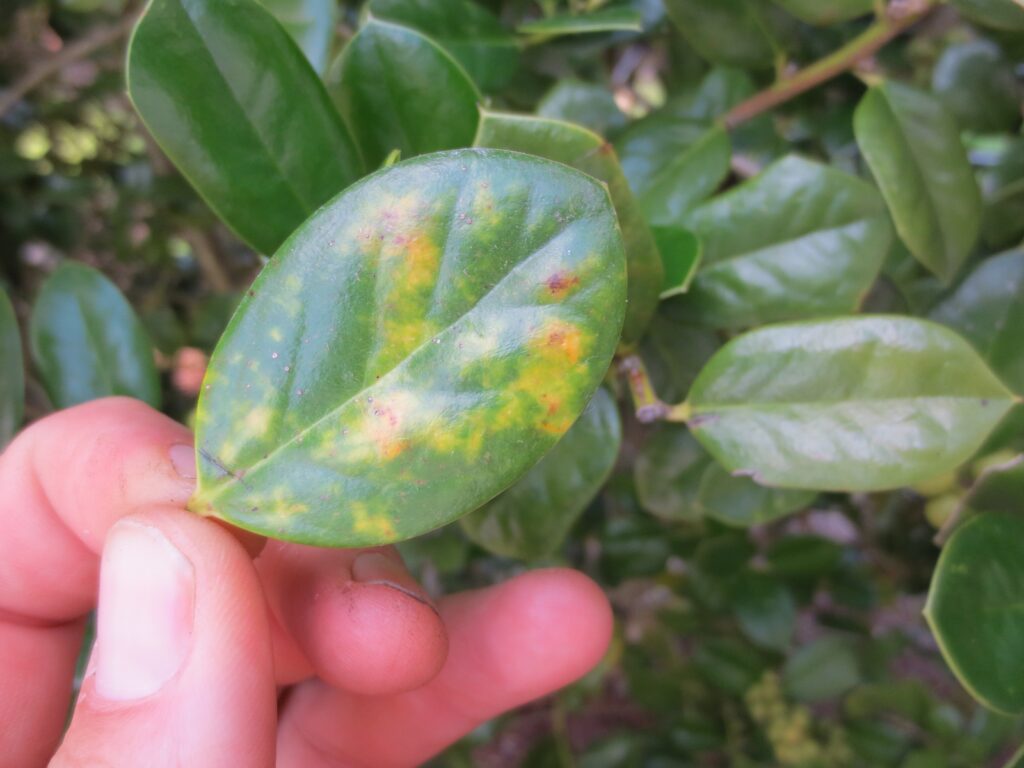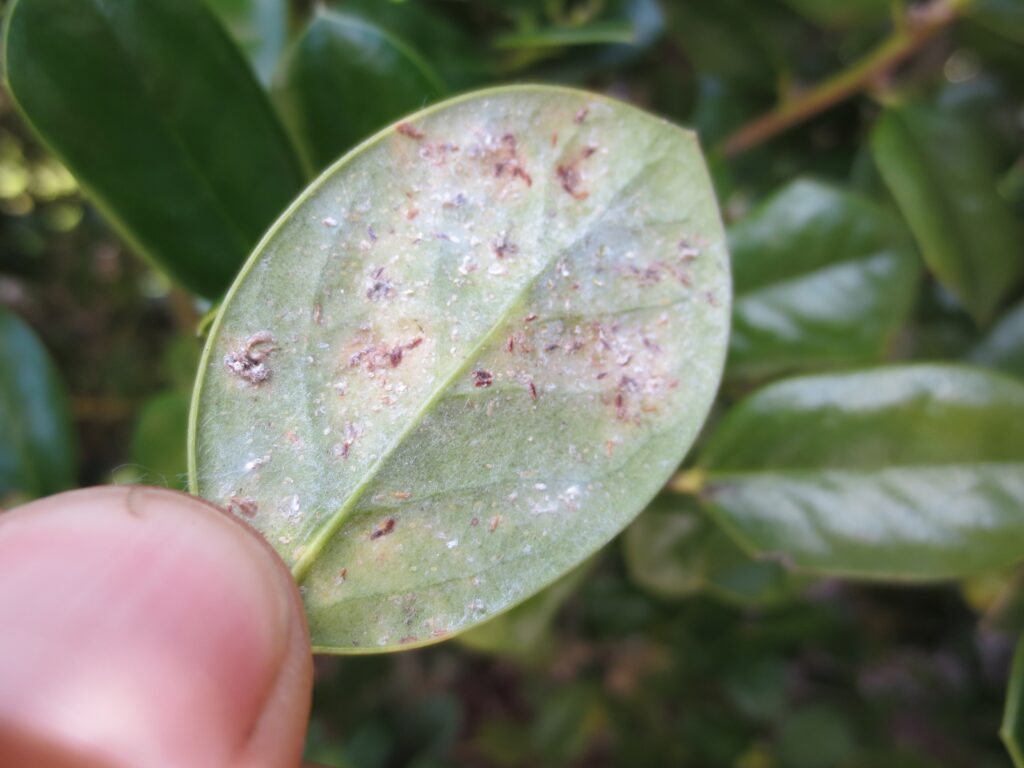Nursery Management of Tea Scale on Camellias and Hollies
go.ncsu.edu/readext?941217
en Español / em Português
El inglés es el idioma de control de esta página. En la medida en que haya algún conflicto entre la traducción al inglés y la traducción, el inglés prevalece.
Al hacer clic en el enlace de traducción se activa un servicio de traducción gratuito para convertir la página al español. Al igual que con cualquier traducción por Internet, la conversión no es sensible al contexto y puede que no traduzca el texto en su significado original. NC State Extension no garantiza la exactitud del texto traducido. Por favor, tenga en cuenta que algunas aplicaciones y/o servicios pueden no funcionar como se espera cuando se traducen.
Português
Inglês é o idioma de controle desta página. Na medida que haja algum conflito entre o texto original em Inglês e a tradução, o Inglês prevalece.
Ao clicar no link de tradução, um serviço gratuito de tradução será ativado para converter a página para o Português. Como em qualquer tradução pela internet, a conversão não é sensivel ao contexto e pode não ocorrer a tradução para o significado orginal. O serviço de Extensão da Carolina do Norte (NC State Extension) não garante a exatidão do texto traduzido. Por favor, observe que algumas funções ou serviços podem não funcionar como esperado após a tradução.
English
English is the controlling language of this page. To the extent there is any conflict between the English text and the translation, English controls.
Clicking on the translation link activates a free translation service to convert the page to Spanish. As with any Internet translation, the conversion is not context-sensitive and may not translate the text to its original meaning. NC State Extension does not guarantee the accuracy of the translated text. Please note that some applications and/or services may not function as expected when translated.
Collapse ▲I have had several inquiries lately about tea scale management from nursery growers in eastern NC. This insect is a common pest in camellias and large leaved hollies (ex. Ilex cornuta or crosses with the same).
In smaller production sizes with short production times, this insect is not usually a problem. When grown in larger containers (7 gallon and up) or in field production over multiple years, populations build and leaf chlorosis caused by feeding becomes an issue. The challenge with management is that they feed on the lower surface of leaves making foliar application of insecticides difficult.
It doesn’t take many years for populations to build since there are multiple generations a year. To learn more about the lifecycle review this Tea Scale Entomology Insect Note and its resource links. Tea scales have multiple generations from February to November and thus monitoring crawlers can be important to determining treatment timing with insecticides.
The following products are listed in the NC Agricultural Chemicals Manual for management of tea scale:
Most of these products will provide best results if applications are made when crawlers are present, so utilizing double sided tape on branches near where adults are present to monitor for them can be useful. Also periodically removing leaves and checking with a hand lens or dissecting scope to determine crawler emergence is another option. Acetamiprid does have translaminar systemic activity so if you can direct applications to the tops of infested leaves, that product will help reduce populations of scales on the lower surface. Azadirachtin, buprofezin and pyriproxyfen are insect growth regulators and must be used to target crawlers.
Dinotefuran is a systemic neonicotinoid that is effective and can potentially provide better population reduction when foliar application is difficult. It can be applied as a drench to container or field grown plants, as a basal bark spray, or in the field as a banded soil spray application. Check the label of products containing dinotefuran for more information on these treatment options.
After insecticide applications are made, since the covering does not disapear, you can determine how well applications worked by turning over the dark females as described in the fact sheet to determine if they are alive. As with most scale insects, growers need to be diligent with scouting and management of tea scale to avoid population buildup that might affect sales.







